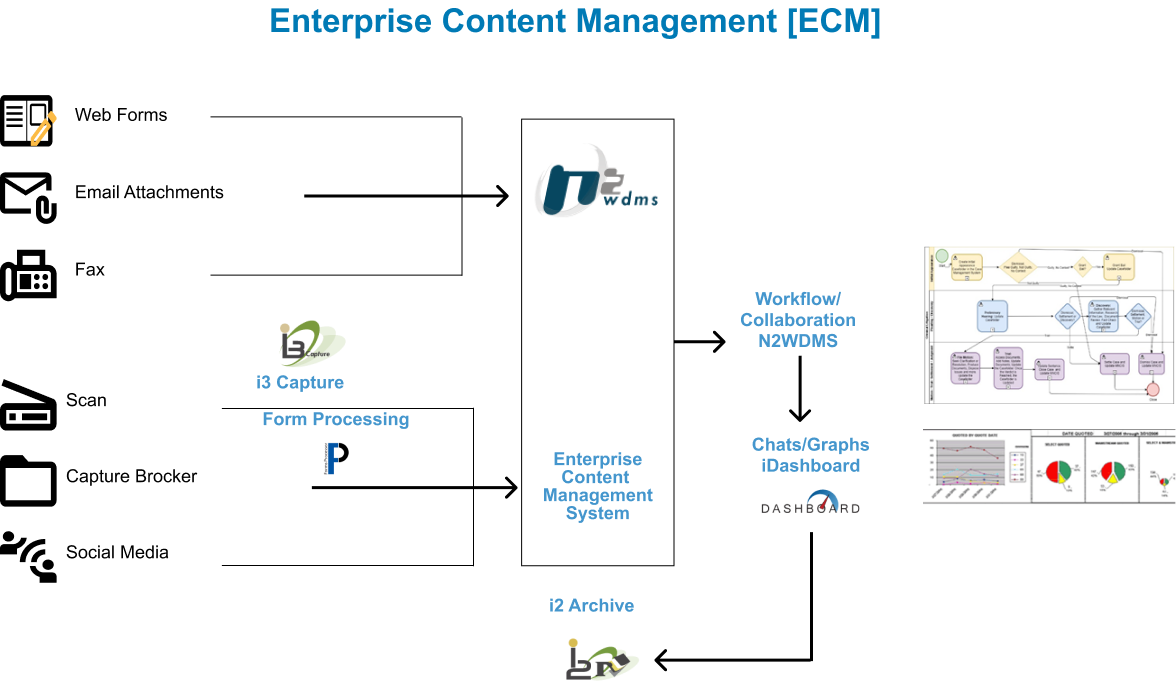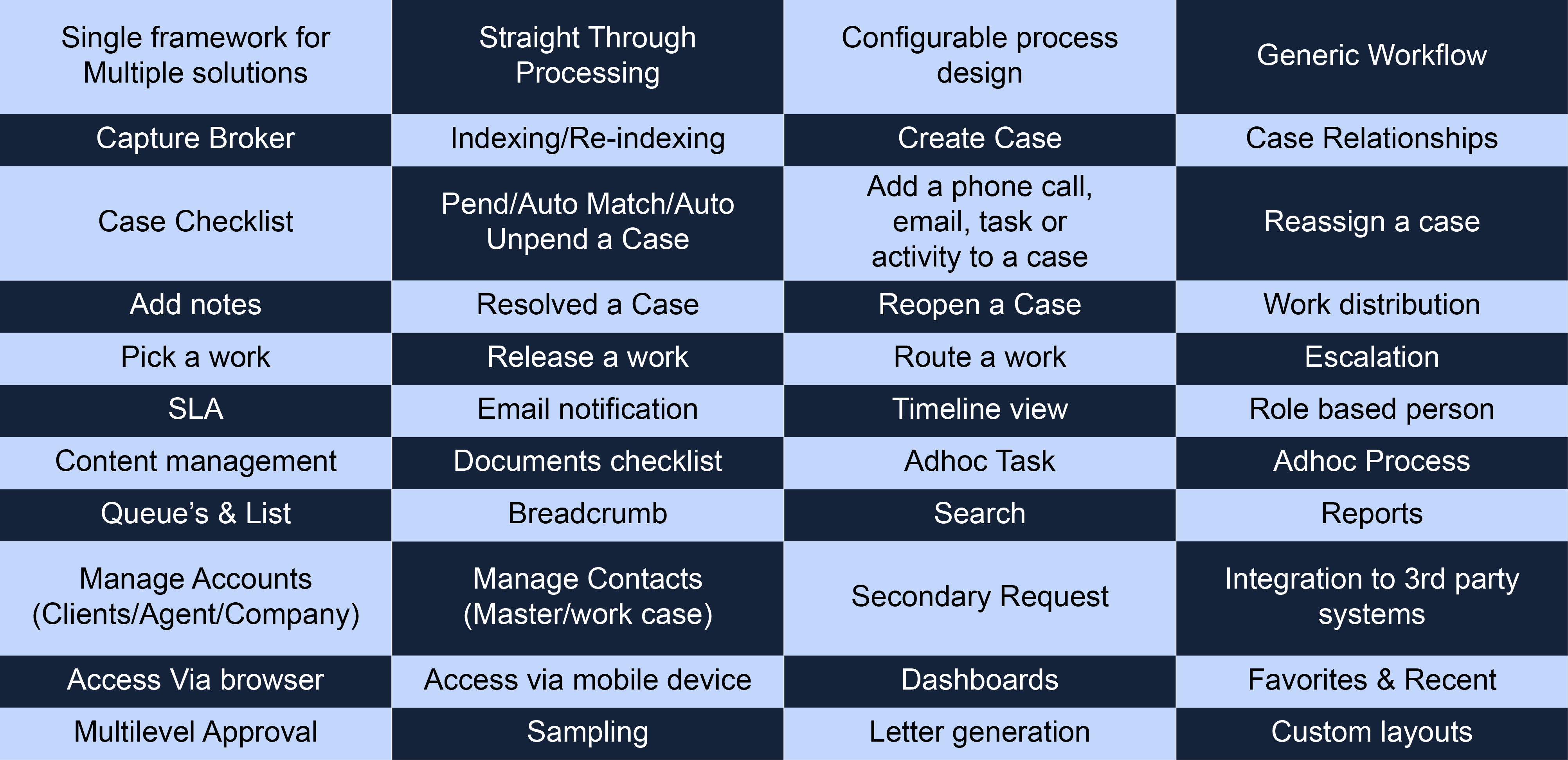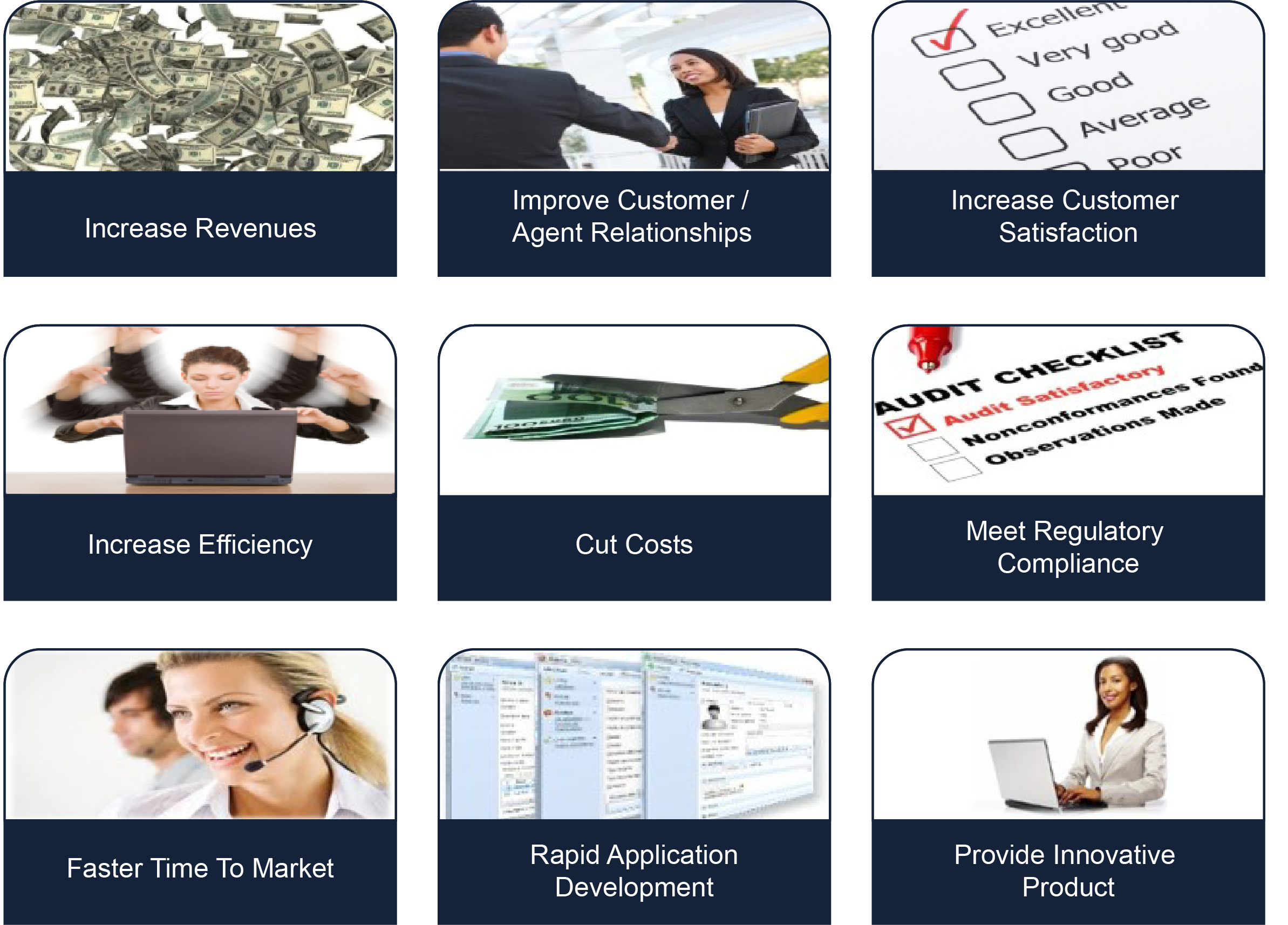
Enterprise Content Management helps you better manage the creation, capture, revision, approval, consumption, storage, retrieval, retention, purge, collaboration and transmission of content and documents related to your business process securely.


Enterprise Content Management helps you better manage the creation, capture, revision, approval, consumption, storage, retrieval, retention, purge, collaboration and transmission of content and documents related to your business process securely.
Invariably organizations face the conflicting needs of ever shorter product and service development cycles, while maintaining strict compliance to US and International regulations. The need for speed and efficiency is driven by competitive market demands; the failure to meet compliance standards can result in costly delays.
In order to maintain compliance and reputation, organizations are put under intense pressure to process vast amounts of paper and electronic structured and unstructured data. This information is related to each minute phase of the development, testing, quality and submission phases of product and or service development, and extends fully to the end-of-life of the product or service.
In addition, if the flow of information is not efficient, the organization can be exposed to long delays and huge risks. These risks are often associated with a lack of proper management of the massive volumes of information from the
initiation through reviewing, verification, recording, collaborating, approving and completion phases.
To avoid or minimize these risks, organizations should adopt new information management strategies to improve product and service quality, efficacy and safety. The clear and proven path is the enterprise content management solutions to provide superior customer satisfaction by maintaining and improving customer loyalty while reducing operating costs. To achieve greater customer satisfaction, customer service departments need the right information at the right time.
To become a truly efficient and productive or customer centric organization, businesses need a comprehensive enterprise content management system that encompasses content, document, process, workflow, security and analytics management.
SoluSoft has a suite of web based enterprise content management products that help organizations better manage the creation, capture, revision, approval, consumption, storage, retrieval, retention, purge, collaboration and transmission of content and documents related to their business process with finer security and compliance. The information related to content and document is in either in the form of a scanned image off a paper document, an electronic file (word, excel, pdf, etc), a database record, main frame print stream, an email, social media stream or off an internet form. SoluSoft's products span the entire spectrum of enterprise content management solutions, particularly on document and content intensive processes of an organization.
In essence SoluSoft's ECM suite encompasses Capture, Document Management, Process Management, case management, Record Management and Archive Management.
Intelligent Capture
ECM: creation, capture, revision, approval, consumption, storage, retrieval, retention, purge, collaboration and transmission of content and documents

In order to maintain compliance and reputation, organizations are put under intense pressure to process vast amounts of paper and electronic structured and unstructured data related to each minute phase of the development, testing, quality and submission phases of product and or service development, and extends fully to the end-of-life of the product or service.
In addition, if the flow of information is not efficient, the organization can be exposed to long delays and huge risks. These risks are often associated with a lack of proper management of the massive volumes of information from the initiation through reviewing, verification, recording, collaborating, approving and completion phases.
To avoid or minimize these risks, organizations should adopt new information management strategies to improve product and service quality, efficacy and safety. The clear and proven path is the Enterprise Content Management (ECM)solutions to provide superior customer satisfaction by maintaining and improving customer loyalty while reducing operating costs. To achieve greater customer satisfaction, customer service departments need the right information at the right time.
To become a truly efficient and productive or customer centric organization, businesses need a comprehensive enterprise content management system that encompasses content, document, process, workflow, security and analytics management.
SoluSoft has a suite of web based enterprise content management products that help organizations better manage the creation, capture, revision, approval, consumption, storage, retrieval, retention, purge, collaboration and transmission of content and documents related to their business process with finer security and compliance. The information related to content and document is in either in the form of a scanned image off a paper document, an electronic file (word, excel, pdf, etc), a database record, mainframe print stream, an email, social media stream or off an internet form. SoluSoft's products span the entire spectrum of enterprise content management solutions, particularly on document and content intensive processes of an organization.
• Capture: Ingest and automatically index single or batches of documents that are captured by external capture systems.
• Upload: upload and index a single or batches of documents manually.
• Full text indexing: After ingestion and indexing, full text indexing is automatically applied to all document by indexing service
• Content Management: You can increase productivity by automating several tasks by feeding the information into the software.
• Content Management:
• Storage Management : Documents are stored in local magnetic storage or SAN or NAS file system repositories
• Process Management : Allows an organization to create and establish business processes by graphically describing how the tasks are worked, by whom, in what order
• Security Management :
• Integration : An interface to external systems is available via APIs to link documents to external business systems such as ERP, HRM, AP and more.
• Analytics : Track key performance indicators (KPIs) and gain insight through analytics


In order to maintain compliance and reputation, organizations are under intense pressure to process vast amounts of paper and electronic structured and unstructured data related to every phase of the development, testing, quality, and submission processes for product and service development. This extends fully to the end-of-life of the product or service.
Additionally, if the flow of information is not efficient, organizations can be exposed to long delays and significant risks. These risks are often associated with a lack of proper management of the massive volumes of information from initiation through review, verification, recording, collaboration, approval, and completion phases.
To avoid or minimize these risks, organizations should adopt new information management strategies to improve product and service quality, efficacy, and safety. The clear and proven path is through Enterprise Content Management (ECM) solutions, which provide superior customer satisfaction by maintaining and improving customer loyalty while reducing operating costs. To achieve greater customer satisfaction, customer service departments need the right information at the right time.
To become a truly efficient, productive, and customer-centric organization, businesses need a comprehensive enterprise content management system that encompasses content, document, process, workflow, security, and analytics management.
SoluSoft offers a suite of web-based enterprise content management products that help organizations better manage the creation, capture, revision, approval, consumption, storage, retrieval, retention, purge, collaboration, and transmission of content and documents related to their business processes with enhanced security and compliance. This information can take the form of scanned images of paper documents, electronic files (Word, Excel, PDF, etc.), database records, mainframe print streams, emails, social media streams, or internet forms. SoluSoft's products cover the entire spectrum of enterprise content management solutions, particularly focusing on document and content-intensive processes within an organization."
• Capture: Ingest and automatically index single documents or batches captured by external capture systems.
• Upload: Upload and manually index single documents or batches.
• Full text indexing: After ingestion and indexing, full-text indexing is automatically applied to all documents by the indexing service.
• Content Management: You can increase productivity by automating several tasks by feeding information into the software.
• Content Management:
• Storage Management : Documents are stored in local magnetic storage or SAN or NAS file system repositories.
• Process Management : Allows an organization to create and establish business processes by graphically describing how tasks are performed, by whom, and in what order.
• Security Management :
• Integration : An interface to external systems is available via APIs to link documents to external business systems such as ERP, HRM, AP, and more.
• Analytics : Track key performance indicators (KPIs) and gain insights through analytics.